If you are looking for a guard dog breed, you should know that the German Shepherd is one of the best guard dogs for homes and properties.
German Shepherds have some fantastic qualities that make them excellent guard dogs. Why are they chosen as the most suitable breed to become or be trained as a guard dog?
Well, here are probably the reasons:
- They are intelligent and strong, which is an excellent combination for a guard dog.
- They are good at protecting their owner’s homes from intruders.
- They are also known to be very bold and courageous.
- They are very protective and always on the lookout for any threat to their family and property.
- They are intelligent dogs that learn quickly.
- They are also very energetic and high-energy, which is a huge asset for a guard dog.
German Shepherds have been used for many things, from military work to hunting, police work, and even search and rescue.
You need to be careful when you are out with this dog as they may attack anyone they find to be a threat to their family. That is why you may have to remove all the other dogs from your house before you get a new German Shepherd puppy.
Until you’re ready to start training your puppy, it’s important to keep him or her busy. To keep your German Shepherd occupied, you may have to invest in a few toys and household items that will keep them engaged.
Keep in mind that German Shepherds are highly intelligent, so you will need to keep the fun of the game and the training sessions short.
Why Do You Need to Start Training Him at a Young Age?
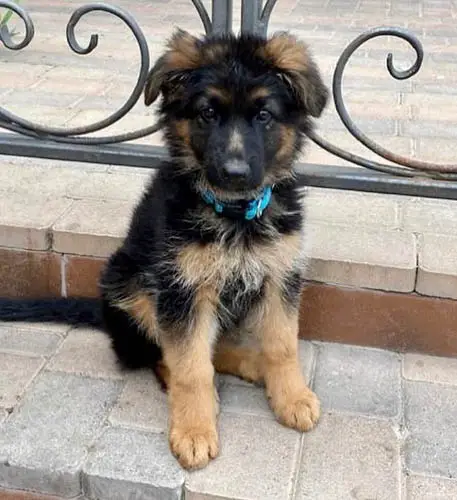
The German Shepherd is a very intelligent dog, and he can be trained to do just about anything. However, if you want him to be a good guard dog, then you need to start training him at a young age. The main reason is that the older the dog becomes, the harder it is to break him of bad habits.
German Shepherds are generally considered good-natured with their loyal and friendly personalities and are often trained to assist people with disabilities.
However, these dogs can be trained to have strong protective instincts as well. With their strong sense of loyalty, they will act as your protector against intruders and will obey your commands to protect your home and property.
Quick reminder: until you’re ready to start training your puppy, it’s important to keep him or her busy. To keep your German Shepherd occupied, you may have to invest in a few toys and household items that will keep them engaged.
Keep in mind that German Shepherds are highly intelligent, so you will need to keep the fun of the game and the training sessions short.
The Guard Dog Training

One of the most versatile dog breeds, German Shepherds, is commonly used to guide the blind, police work, and search and rescue dogs.
They’re a great addition to any family, but their amazing skills don’t just appear overnight. If you are thinking about getting a German Shepherd puppy and training it to be a guard dog, you will need to start early.
German Shepherd pups are typically ready to start training at the age of eight to ten weeks old. The training should be done in small increments to help the puppy retain the knowledge.
It is important to remember that German Shepherd puppies will need lots of toys to entertain them while growing into adults. This is one of the best ways to help them develop their thinking skills.
With this in mind, here are the following ways on how to train your puppy to become a guard dog:
Make sure he knows that you are the pack leader and that he respects you.
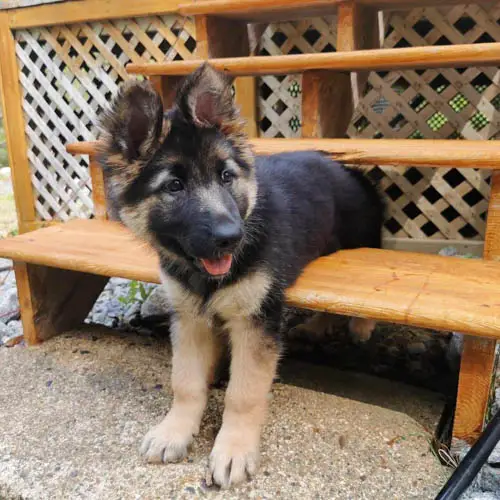
To do this, you need to establish dominance over him in a calm, non-threatening manner. German Shepherds are smart, confident, and can make great guard dogs, but they need to know that you are the pack leader right from the start.
This means you need to be the one that feeds him, gives him treats, and decides when he gets to play and when he has to settle down. It also means that you have to be the only one that disciplines him to know that you are the one in charge.
Socialization is one of the most important things you can teach your dog because he needs to interact with other dogs positively. He also needs to learn to behave responsibly in public.
Start by taking him or her to public places, such as the mall, a park, and even grocery stores. This is an important step in training.
They need to be trained and socialized to know their place in the family and integrate themselves into an everyday routine.
This is especially true if they’re used as guard dogs since they need to be taught to look for danger and protect their family when danger presents itself.
You will need to teach your German Shepherd puppy obedience commands first before moving on to other training.
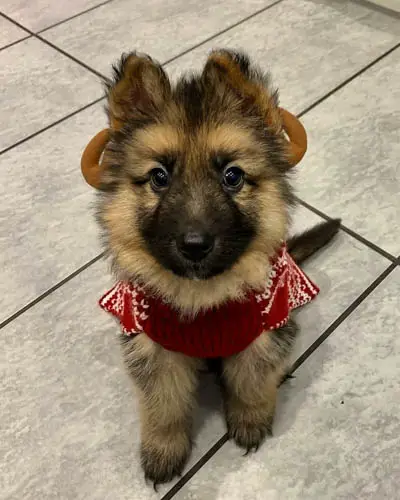
As a puppy, your dog will be a blank slate and will eagerly learn what you teach him. Just like a small dog should know the basic commands like sit, down, and stay, a large dog should also know these commands.
This is the first step to making him a well-mannered dog. It will also make him more comfortable in your home. By the time he is fully grown, his training will be set and will be more difficult than before.
Let your puppy get familiar with the crate training.
Crate training is one of the steps you need to take when training your puppy. If you are preparing to bring a new puppy home, you need to plan.
Crate training is the best way to introduce your new pup to his new home. It will help keep your home and possessions safe while teaching your puppy to accept and respect you as the pack leader.
Introduce to them the house training.
One of the important parts of the guard-dog training plan is House Training. You can’t simply put your dog outside to go to the bathroom.
They will not know where to go. You need to show them the right place to go. And the best place to do this is right after mealtime when they will be looking for a place to go.
Hone their recall skill.
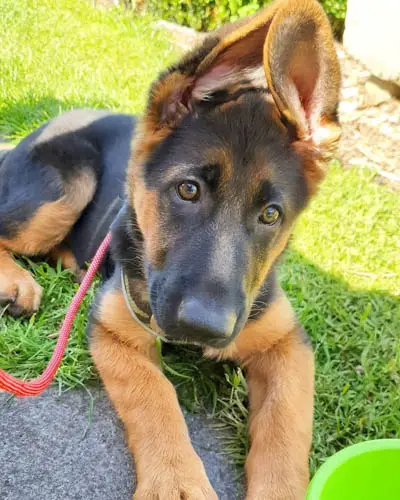
As a guard dog, you want your puppy to respond immediately when you call his name. Teach your puppy to come when called as soon as possible, as one of the steps in your training.
If you wait too long, your puppy may not come at all or not until he wants to. So, start now and teach your puppy to come when called.
Getting your puppy to focus on you.
While it’s impossible to stop your German Shepherd from being protective, it is possible to control how protective he is by teaching him to control the impulses that lead to problem behavior.
One excellent way to do this is by using a leash to control when he guards you. If he starts to growl or bark at another dog or person, for example, you can correct his behavior by asking him to sit, then gently pulling him toward you.
In this way, you can also use the leash to keep him from following you into potentially dangerous situations, such as the yard of a dog that he has been growling at.
A German Shepherd dog is a brilliant breed known for its keen sense of smell and strong protective instincts.
This makes them the perfect personal protection dog. However, training a German Shepherd dog to guard is not something to be taken lightly. You will have to dedicate time and effort to the teaching and training of the dog, but the dog will work hard for you and your family to protect you.
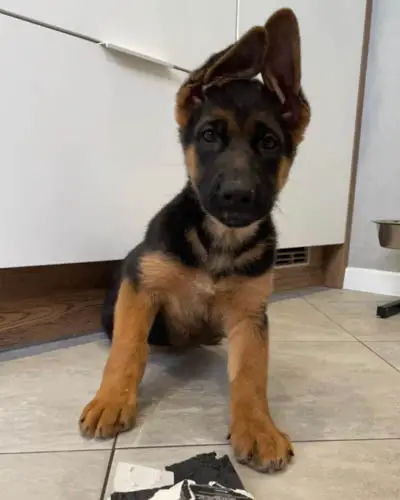
If you decide to adopt a German Shepherd dog, you will want to train a German Shepherd puppy. As a puppy, your German Shepherd must be exposed to various situations and experiences to become an adaptable adult dog.
Before Taking the Next Step
The best time to start this training is when you first get your dog. Dogs are very smart, and they can learn new things quickly.
The most important thing to keep in mind in training your dog as a guard dog is not to let your dog become aggressive or harm anyone. You should always use positive reinforcement with your training and remember never to yell at or beat your dog.
Training a German Shepherd puppy to be a guard dog can be a rewarding experience. Understanding what characteristics to watch out for and how to correct unwanted behaviors will make the process easier.
A well-trained German Shepherd will be an asset to anyone who has the animal as a pet. It will take some time, but it is worth the effort.